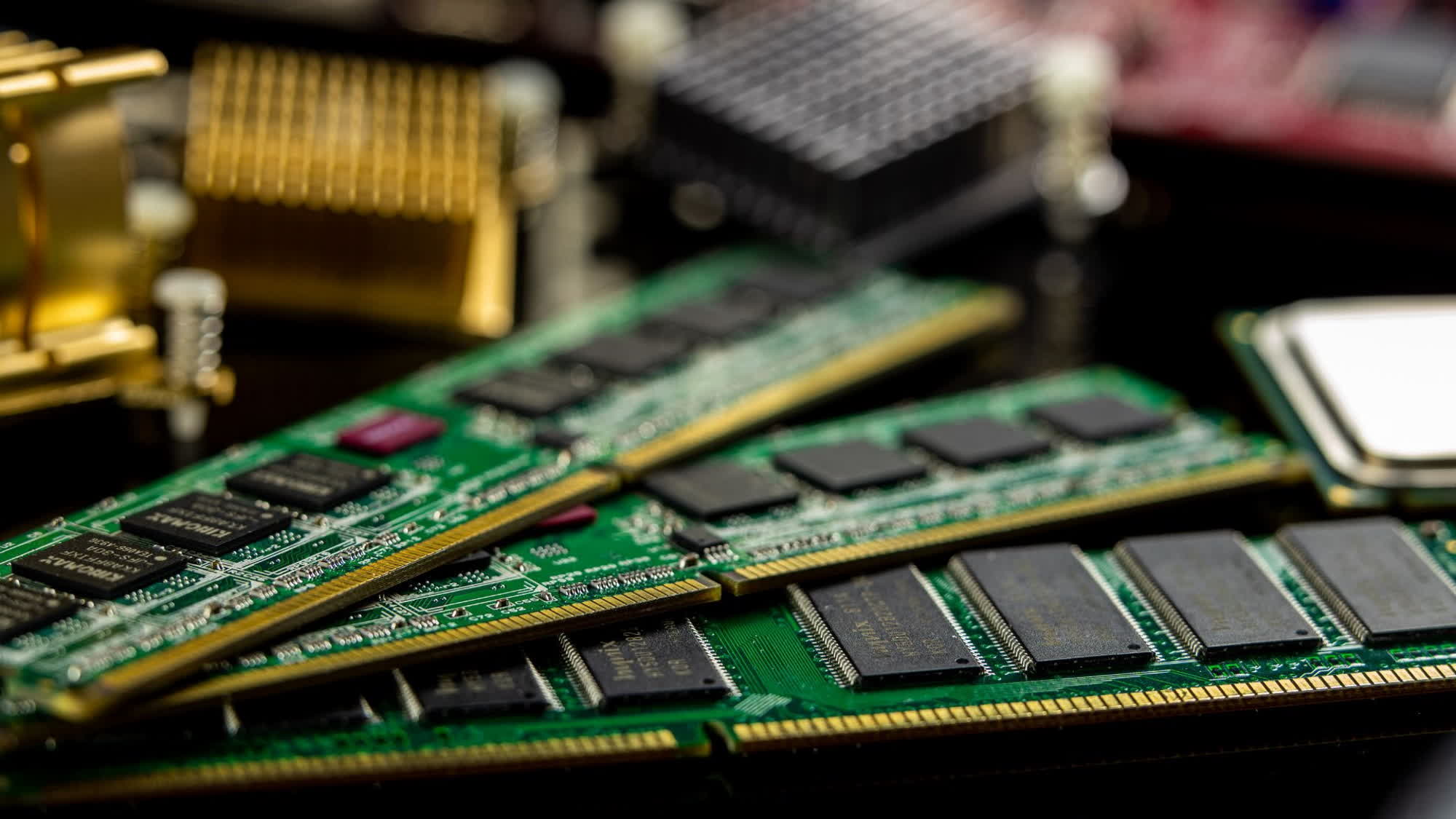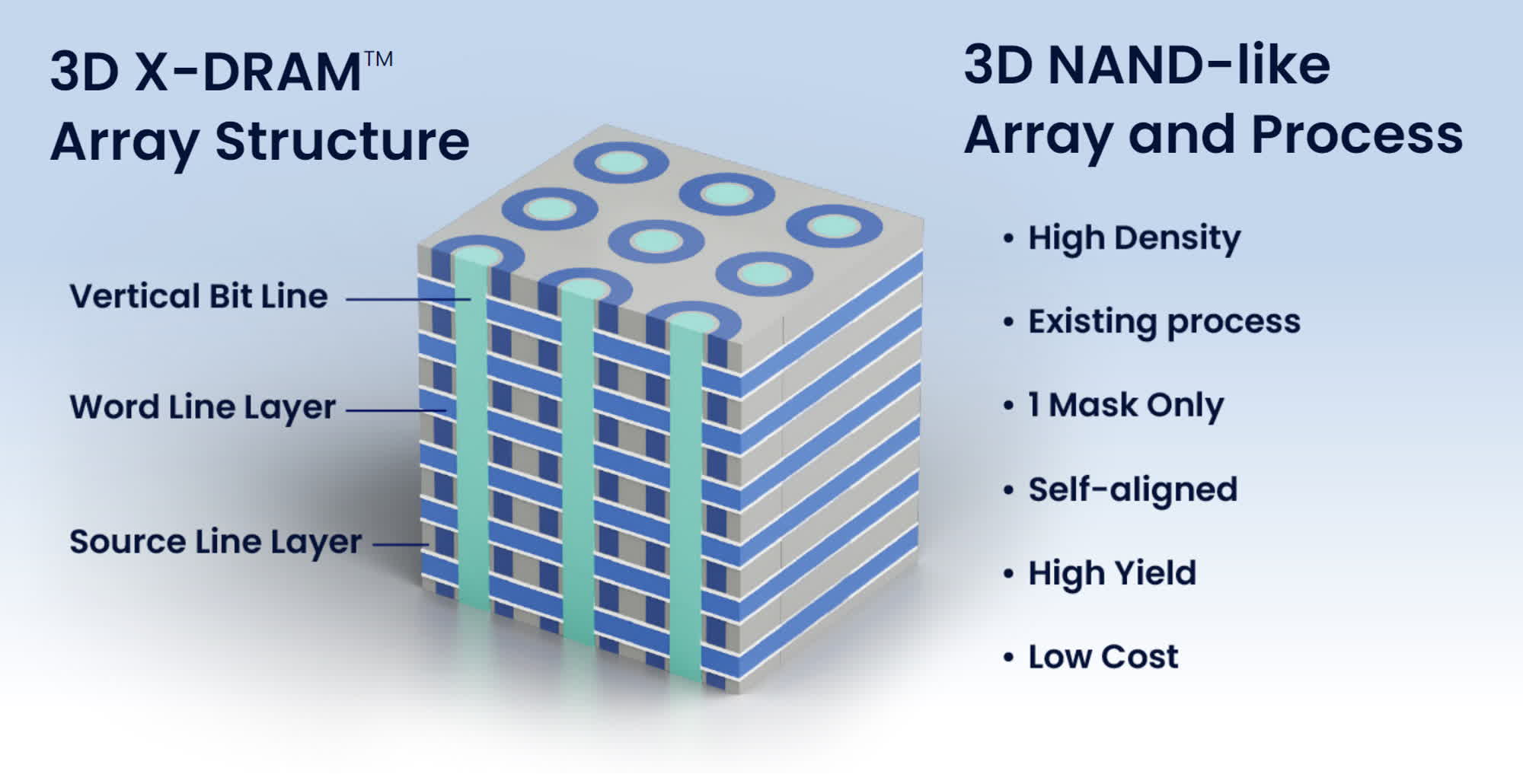What just happened? A Californian company is launching what it calls a ground-breaking solution for increasing DRAM chip density with 3D stacking technology. The new memory chips will greatly improve DRAM capacity while still requiring low-cost, low-maintenance manufacturing efforts.

NEO Semiconductor says 3D X-DRAM is the world's first 3D NAND-like technology for DRAM memory, a solution developed to solve DRAM's capacity bottleneck while replacing the "entire 2D DRAM market." The company states its solution is better than competing products, as it's much more convenient than other options on the market today.
3D X-DRAM employs a 3D NAND-like DRAM cell array structure based on capacitor-less floating body cell technology, NEO Semiconductor explains. 3D X-DRAM chips can be manufactured with the same methods currently used for 3D NAND chips, as they only need one mask to define the bit line holes and form the cell structure inside the holes.
This cell structure simplifies the number of steps in the process, providing a "high-speed, high-density, low-cost, and high-yield solution" to 3D system memory manufacturing. NEO Semiconductor estimates that its new 3D X-DRAM tech can achieve a 128 Gb density with 230 layers, 8 times larger than today's DRAM density.

Neo said that an industry-wide effort is underway to bring 3D stacking solutions to the DRAM market. With 3D X-DRAM, chip manufacturers can leverage the current, "mature" 3D NAND process with no need for more exotic processes proposed by academic papers and researchers within the memory industry.
The 3D X-DRAM solution will seemingly avoid decade-long delays for the adoption of 3D NAND-like technology by DRAM manufacturers, while the next wave of "artificial intelligence applications" such as the ubiquitous ChatGPT chatbot algorithm will drive the increase in demand for high-performance, high-capacity memory systems.
Andy Hsu, founder and CEO of NEO Semiconductor and an "accomplished technology inventor" with more than 120 U.S. patents, said that 3D X-DRAM is the clear leading solution in the rising 3D DRAM market. It's a very simple and cheap solution to manufacture and scale, and it could be a boom, especially in the server market with its pressing demand for high-density DIMM modules.
Relevant patent applications about 3D X-DRAM were published with the United States Patent Application Publication on April 6, 2023, NEO Semiconductor said. The company expects the technology to further develop and improve, with a linear increase in densities from 128Gb to 1Tb in the mid-2030s.
https://www.techspot.com/news/98602-neo-semiconductor-launches-3d-x-dram-world-first.html